|
Hagen - Mpumalanga / South Afrika
Mural 2000 in Hagen
Bunkerwall in the center of Hagen, Germany, July 2000
organization:
AllerWeltHaus Hagen e.V.
co-operation:
Kultur- und Jugendamt der Stadt Hagen, Frauengleichstellungsstelle
Artists:
Xolile Mtakatya, Khayelisha, Southafrica and Werner Rappaport, Hagen
|
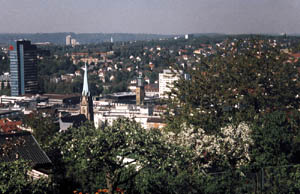 |
| Hagen am Rand des Ruhrgebiets |
|
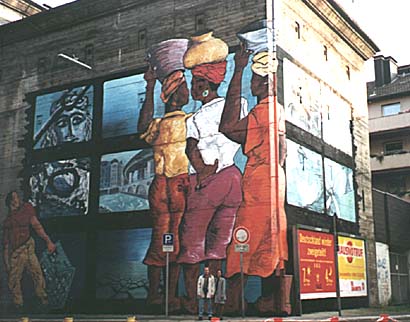
| | Mural Hagen
|
Mural 2000 in Hagen
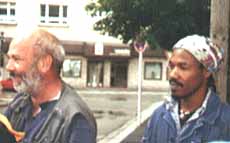
| | the artists
|
Hagen is one of the few cities that have established a partnership with a whole South African province. The partnership is being supported mainly by the "Allerweltshaus", the cultural department and the office for gender equality of the city of Hagen. These bodies also were the ones that took care of the execution of the mural project.
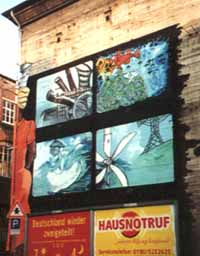
| | the other side
|
The contacts with Mpumalanga not being so well advanced at the time the planning started, no woman artist from that province could be identified. This was a great pity as the agreed aim of the exchange is to provide exchange opportunities for women and to help improve their financial status. Klaus Klinger of "Farbfieber" put Hagen in touch with Xolile Mtakaya from South Africa, who at the time was booked for painting in Osnabrück and Essen and later in Aachen.Xolile's counterpart was Werner Rappaport, a committed artist from Hagen who had international experience.
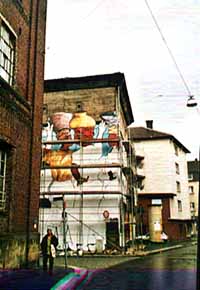
| | Hagen, work
|
The idea to start off discussing the general plan of the mural by e-mail did not work on account of different technological equipment in the North and the South. Therefore the first sketches had to be created in personal meetings of the artists. The central theme was to be water. The original idea, to have this theme Represented in its two aspects of good and evil, i.e. nature and industry, had to be abandoned as this was no way of showing the situation in the North and in the South as being different.
The artists finally agreed on presenting different stories that the viewer would be asked to combine for himself or herself according to their own position.
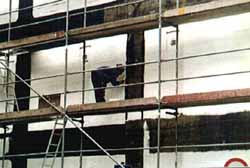
| | Xolile
|
Some people living in a high-rise building and some who frequented a homeless people's shelter actively took part in the artistic process.
They welcomed the fact that something was happening in their rather drab part of town and also appreciated the fact that the issue of Poor and Rich found its expression in the mural, thus making it a public issue.
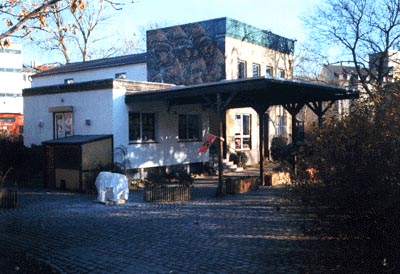
| | AllerWelthaus, Hagen
|
|

